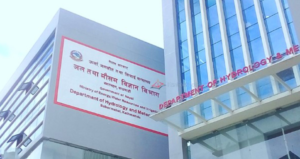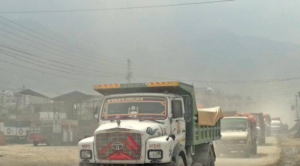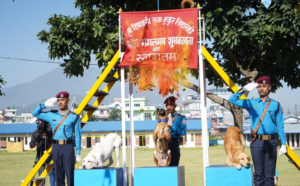Nepal’s Lifeline Under Threat: A 12-Point Explainer on the Narayangadh–Muglin Road Obstruction

Agency: A massive landslide has once again blocked the Narayangadh–Muglin road for an indefinite period, stranding thousands of passengers during the Dashain vacations.
Authorities are urging travelers to use alternative routes while working to clear the debris, but the steep terrain and unstable slopes make restoration extremely difficult.
This 36-kilometer stretch is a crucial link in Nepal’s highway network, connecting Kathmandu to major border trade hubs that collectively handle around 90% of Nepal’s trade with India.
The road sees over 10,000 vehicles daily, including trucks carrying goods, essential supplies, and passengers.
Historically, it was narrow and wound through steep hills alongside the Trishuli River, making it highly vulnerable to landslides.
To address these risks, the road was upgraded, widening it to 9–11 meters and stabilizing over 100 slopes using a combination of engineering and bioengineering techniques.
This explainer answers key questions in a 12 question and answer format, covering topics such as accident history, economic costs, terrain and geology, weather hazards, delays in fund approval, coordination gaps, budget priorities, regulation of construction above the road, traffic management and enforcement, slope protection measures, broader safety concerns, and road design and construction standards.
Why is the Narayangadh–Muglin road strategically important?
Narayangadh-Muglin road is a key artery linking Kathmandu with southern trade hubs like Birgunj and Bhairahawa, which together handle 90% of Nepal’s cross-border trade.
Being part of the Asian Highway Network (AH 42), the corridor is critical for international commerce, tourism, and domestic connectivity. https://english.nepalnews.com/s/explainers/nepals-lifeline-under-threat-a-12-point-explainer-on-the-narayangadh-muglin-road-obstruction/




